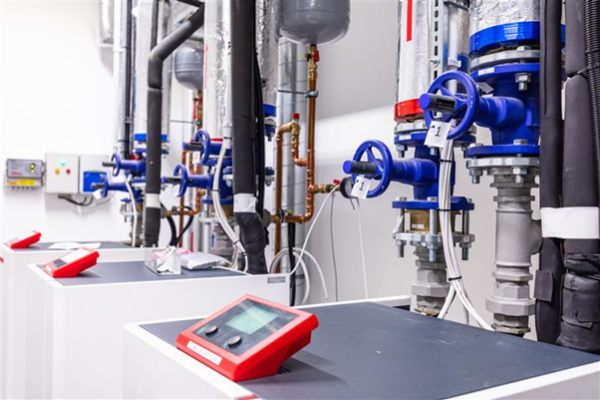Updated guidance on high-temperature heat pumps
High temperature heat is often generated by burning fossil fuels, pumping out greenhouse gases. An update to a 2021 publicly available specification (PAS) aims to help residential, commercial, and industrial users of high temperature heat use equipment that’s better for the environment and budgets.

SNZ PAS 5210 High temperature heat pumps provide good practice advice and information to support the adoption of energy-efficient heat pump systems for domestic, commercial, and industrial applications. This PAS is limited to the most common systems available, which are those that utilise a closed mechanical vapour compression cycle using electricity.
The 2021 version was focused on high-temperature heat pumps used to provide reticulated hot water for heating in institutional settings – for example, radiators in schools or office buildings. The revision extends the applications to domestic hot water heaters, commercial users of hot water, and process heating (water, air, or other substances) in industry.
The field of high-temperature heat pumps is an area of active research and innovation, so the PAS has been updated with the latest information. Recent advances in the heat pump technology have made them better suited to high-temperature applications where heat is delivered at a temperature range from 50°C up to 160°C to allow for heat loss as it is moved from source to destination.
Expert input
Leading the standards development committee of experts is Dr Richard Love, Senior Lecturer in Food Science and Technology with Massey University and Chair of the New Zealand National Committee of the International Institute of Refrigeration (IIR). ‘I was pleased to lead the technical advisory group made up of representatives from nominating organisations from academia, health and safety, building associations, energy efficiency and emissions, refrigeration, heating and air conditioning engineers. Committee members are at the forefront of research and application into related areas of specialism including energy efficiency, process engineering, and heat pump technology.’
‘I would like to acknowledge the time and energy given by the committee members in producing this 75-page document with many diagrams drawn to help users understand the objectives. Also thanks to Standards New Zealand and all those who gave feedback through public consultation. This really helped us clarify some thoughts and avoid any misinterpretations.’
For domestic, commercial and industry users
This document has been written with three main audiences in mind: domestic, commercial, and industrial and different sections of the document for each:
Sections 1 and 2 are intended for all readers. They provide information about the scope of the PAS, key concepts and definitions, and a general introduction to high-temperature heat pumps (HTHPs) and their benefits.
Sections 3, 4, 5, and 6 are aimed at domestic HTHPs. The key application is the provision of potable hot water. Section 3 gives a general overview, whereas Sections 4, 5, and 6 provide technical information of use to contractors, designers, and manufacturers of domestic HTHP systems.
Sections 7, 8, 9, 10, 11, and 12 are aimed at commercial HTHPs. Section 7 is general design and configuration information. Section 8 includes requirements for commissioning and ongoing performance assessment. Purchasers of commercial HTHPs may have their own contractual commissioning and performance requirements and it is recommended that the requirements here are used to inform those requirements. Sections 9, 10, 11, and 12 cover the main commercial applications: commercial-scale potable-water heaters, space heating, pool heating, and fresh-air tempering.
Section 13 is aimed at the use of HTHPs for industrial-process heat applications.
Technical appendices
The Appendices contain other technical information for installers and designers including:
- Appendix A contains additional application focussed information on refrigerants applicable across all of the domestic, commercial, and industrial specific sections.
- Appendix B contains information on a modification of the AS/NZS 5125.1 test methodology to apply for HTHPs with a heating capacity greater than 15 kW.
- Appendix C contains calculation methods for the Carnot coefficient of performance (COP). Comparing actual performance to the Carnot COP is an important performance metric in all HTHP applications.
- Appendix D contains calculation methods for the energy use, energy cost, greenhouse gas emissions, emissions trading scheme (ETS) savings, and simple payback for an HTHP and compares it to traditional fossil-fuel-based heating systems.
Understanding PAS
SNZ PAS 5210:2024 High-temperature heat pumps has been prepared as a guidance document. PAS are an ISO-recognised category for documents that are not national standards but are produced by a national standards body to respond to a particular market need. They represent either consensus in an organisation or industry, or consensus of the experts within a specific working group.
Terms used in the guide include ‘shall’ referring to requirements that are essential for compliance with this specification, while the word ‘should’ refer to practices that are advised or recommended.
Sponsored to help users do the right thing
Implementing good industry practice can result in better energy efficiency and ultimately less carbon emissions. That’s why SNZ PAS 5210:2024 High-temperature heat pumps has been sponsored for free download by the Energy Efficiency and Conservation Authority (EECA).
Find your copy here:
